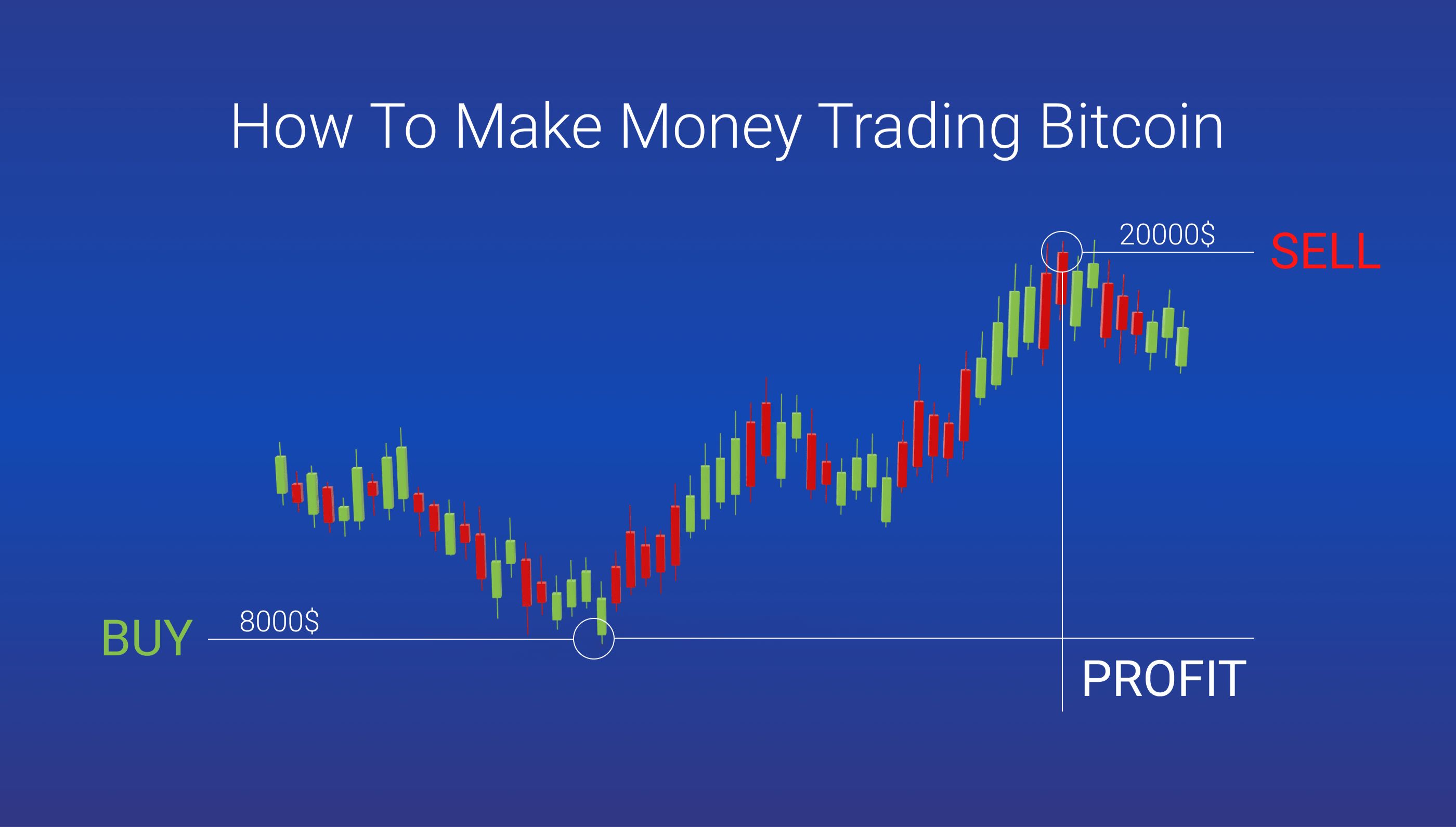Introduction
Bitcoin, the pioneering cryptocurrency, has captured the attention of investors, traders, and enthusiasts around the globe. With its decentralized nature and groundbreaking technology, Bitcoin has emerged as a highly volatile and speculative asset, attracting both fervent supporters and skeptical critics.
In recent years, the price of Bitcoin has experienced significant fluctuations, leading many to question when it will reach its bottom. The concept of a bottom refers to the lowest point at which the price of an asset stabilizes before potentially starting an upward trend. Identifying this bottom can provide valuable insights for investors seeking to enter the market or accumulate more Bitcoin.
However, predicting Bitcoin’s bottom is a challenging endeavor. The cryptocurrency market is influenced by a multitude of factors, including technical analysis, market sentiment, regulatory changes, influential events, and historical patterns. To gain a better understanding of when Bitcoin might reach its bottom, let’s explore these key factors in more detail.
Factors Affecting Bitcoin’s Bottom
When trying to determine when Bitcoin will reach its bottom, it’s essential to consider various factors that can impact the cryptocurrency’s price trajectory. These factors can be broadly categorized into technical analysis indicators, market sentiment, regulatory environment, influential events, and historical data patterns.
Technical Analysis Indicators: Technical analysis involves studying historical price data and market trends to identify potential patterns and predict future price movements. Traders often use indicators such as moving averages, support and resistance levels, and oscillators to assess market sentiment and make informed trading decisions. These technical analysis tools can help determine when Bitcoin is reaching a bottom or experiencing a reversal in its price trend.
Market Sentiment: Market sentiment plays a crucial role in determining the price of Bitcoin. Positive sentiment, fueled by optimism and increased buying pressure, can drive the price higher. Conversely, negative sentiment, driven by fear and selling pressure, can cause the price to decline. Monitoring market sentiment through social media, news sentiment analysis, and surveys can provide insights into investor attitudes and potential shifts in Bitcoin’s price direction.
Regulatory Environment: The regulatory landscape surrounding cryptocurrencies has a significant influence on their price volatility. Government regulations, policies, and decisions related to cryptocurrency exchanges, taxation, and legality can impact investor confidence and overall market sentiment. News about regulatory developments, both positive and negative, can exert considerable pressure on Bitcoin’s price and contribute to determining its bottom.
Influential Events: Bitcoin’s price can be strongly influenced by significant events and news. These events can include major partnerships, technological advancements, security breaches, or even comments from influential individuals or institutions. Market-moving news related to Bitcoin or the broader cryptocurrency industry has the potential to trigger significant price movements, making it important to stay updated on relevant news and events when assessing Bitcoin’s bottom.
Historical Data Patterns: Analyzing historical data can provide valuable insights into Bitcoin’s price patterns and potential bottoms. By examining previous market cycles, retracements, and consolidation periods, it’s possible to identify recurring trends and patterns that could help predict future price behavior. However, it’s important to note that past performance is not indicative of future results, and market conditions can change due to various factors.
Considering these factors collectively can assist traders and investors in making more informed decisions regarding Bitcoin’s bottom. It’s crucial to remember that predicting the exact bottom of any asset, including Bitcoin, is challenging and prone to uncertainty. Utilizing a combination of these factors along with expert opinions and fundamental analysis can help form a more comprehensive understanding of the market and increase the likelihood of making well-informed investment choices.
Technical Analysis and Prediction Models
Technical analysis plays a crucial role for traders and investors in predicting Bitcoin’s bottom. It involves using various indicators, chart patterns, and statistical tools to analyze historical price data and identify potential trends and patterns. Several prediction models have emerged in the cryptocurrency market to help forecast Bitcoin’s future price movements.
Moving Averages: Moving averages are commonly used technical indicators that smooth out price fluctuations and help identify potential trend reversals. Traders often focus on the 50-day moving average and the 200-day moving average to determine possible support and resistance levels. When the price of Bitcoin crosses above the moving average, it could indicate a potential reversal or the start of an upward trend.
Relative Strength Index (RSI): The RSI is a momentum oscillator used to assess whether Bitcoin is overbought or oversold. It measures the speed and change of price movements and provides information on potential trend reversals. When the RSI reaches extremely high levels (above 70), it suggests that Bitcoin may be overbought and due for a price correction. Conversely, an RSI below 30 indicates oversold conditions, potentially signaling a price rebound.
Fibonacci Retracement: Fibonacci retracement levels are based on the mathematical ratios identified by the Italian mathematician Leonardo Fibonacci. Traders use these levels to identify potential support and resistance areas within a price trend. The most commonly used Fibonacci retracement levels in Bitcoin analysis are 38.2%, 50%, and 61.8%. When the price of Bitcoin retraces to these levels, it could indicate a possible entry point or a reversal in the price trend.
Support and Resistance Levels: Support and resistance levels are horizontal price levels at which Bitcoin has historically struggled to move below or above. These levels can provide important clues about potential buying or selling opportunities. If Bitcoin approaches a significant support level and demonstrates a bounce in price, it could indicate a bottom or a temporary price floor.
Prediction Models: In addition to technical indicators and tools, various prediction models have gained popularity in forecasting Bitcoin’s future price movements. These models often utilize artificial intelligence, machine learning algorithms, and historical price data to generate predictions. However, it’s important to exercise caution when relying solely on prediction models, as they are not infallible and can be affected by unforeseen events and market dynamics.
While technical analysis and prediction models provide valuable insights into Bitcoin’s price movements, it’s essential to remember that they are not foolproof. Cryptocurrency markets are highly volatile and susceptible to sudden price swings. Therefore, it’s advisable to use technical analysis in conjunction with other factors such as market sentiment, regulatory developments, and influential events to make more well-rounded assessments of Bitcoin’s bottom.
Market Sentiment and Investor Psychology
Market sentiment and investor psychology play a crucial role in determining Bitcoin’s bottom. Market sentiment refers to the collective attitudes and emotions of market participants towards an asset, while investor psychology refers to the cognitive biases and emotional factors that influence investment decisions.
Positive market sentiment can drive up the price of Bitcoin, fueled by optimism, positive news, and increased buying pressure. In this scenario, investors have a positive outlook on the future of Bitcoin, expecting the price to rise. This can create a self-fulfilling prophecy as more investors buy into the market, increasing the demand and driving the price higher.
On the other hand, negative market sentiment can lead to a decline in Bitcoin’s price. Factors such as fear, uncertainty, and negative news can cause investors to sell their holdings, creating selling pressure and driving the price down. This creates a downward spiral as more investors panic-sell, resulting in further price drops.
Investor psychology also plays a significant role in shaping Bitcoin’s bottom. Emotions such as fear, greed, and herd mentality can heavily influence investment decisions. For instance, during a market downturn, fear can cause investors to panic-sell and exit the market, potentially leading to a bottom. Similarly, greed can lead investors to buy on speculation, driving the price higher before a potential bubble burst.
Herd mentality, where individuals follow and mimic the actions of the majority, can also impact Bitcoin’s price. When there is a prevailing belief that Bitcoin will continue to rise, investors may join the bandwagon, further driving up the price. Conversely, when negative sentiment prevails, investors may rush to sell their holdings, amplifying the price decline.
Understanding market sentiment and investor psychology is crucial when assessing Bitcoin’s bottom. Analyzing social media trends, sentiment analysis, and surveys can provide insights into the prevailing sentiment amongst investors. Furthermore, monitoring investor behavior, such as trading volumes and patterns, can offer additional clues regarding Bitcoin’s bottom.
It’s important to note that market sentiment and investor psychology are subjective and can change rapidly. Sentiment can be influenced by news events, market trends, and external factors, making it challenging to predict and time Bitcoin’s bottom with certainty.
By considering market sentiment and investor psychology alongside other factors such as technical analysis, regulatory environment, and influential events, investors can gain a more comprehensive understanding of the market dynamics and make more informed decisions regarding Bitcoin’s bottom.
Regulatory Environment and Government Intervention
The regulatory environment and government intervention play a significant role in determining Bitcoin’s bottom. As a decentralized and global asset, Bitcoin is subject to regulatory scrutiny and government policies that can impact its price stability and overall market sentiment.
Government regulations can have both positive and negative effects on Bitcoin’s price. Positive regulations that provide clarity, legitimacy, and consumer protection can instill confidence in the market and attract institutional investors. This can lead to increased adoption and investment in Bitcoin, potentially driving up the price. On the other hand, negative or restrictive regulations can create uncertainty and hinder market growth, leading to a decline in Bitcoin’s price.
Government intervention can also influence Bitcoin’s price. Events such as bans on cryptocurrency exchanges, imposed restrictions on trading, or even government-sponsored hacking incidents can have a substantial impact on market sentiment. Negative government intervention can cause panic-selling and potentially push Bitcoin towards a bottom.
Furthermore, government policies on taxation and legal frameworks can affect Bitcoin’s price stability. Changes in tax regulations, specifically how cryptocurrencies are treated for tax purposes, can impact investor behavior and influence market sentiment. Clarity and consistency in legal frameworks surrounding Bitcoin can provide a more favorable environment for investors and potentially contribute to a more stable price.
Global regulatory developments are also critical. Bitcoin is not limited by geographical boundaries, and regulatory decisions made in one country can have a ripple effect across the global cryptocurrency market. Investors should monitor regulatory news and developments in major economies to gauge potential impacts on Bitcoin’s bottom.
It’s worth noting that the regulatory landscape surrounding cryptocurrencies is still evolving, and different countries have varying approaches to regulation. Some countries have embraced and fostered cryptocurrency innovation, while others have taken a more cautious or restrictive stance. The uncertainty and inconsistency in regulatory approaches can add to the volatility and unpredictability of Bitcoin’s price movement.
When assessing Bitcoin’s bottom, investors should closely monitor regulatory developments and government intervention. It’s important to stay informed about proposed regulations, government actions, and any potential shifts in regulatory frameworks that may impact the cryptocurrency market. By understanding the regulatory environment, investors can better navigate potential risks and opportunities and make more informed decisions regarding Bitcoin’s bottom.
Influential Events and News
Influential events and news can have a profound impact on Bitcoin’s price and play a significant role in determining its bottom. These events can range from partnerships and technological advancements to security breaches and regulatory developments.
Positive news and events often lead to an increase in Bitcoin’s price. For example, announcements of major partnerships with well-established companies can create optimism and attract new investors, potentially driving up the price. Technological advancements, such as the implementation of scalability solutions or improvements in privacy features, can also generate positive sentiment and contribute to a higher valuation.
On the flip side, negative events can cause Bitcoin’s price to decline. Security breaches or hacking incidents can erode investor confidence and lead to panic-selling, potentially pushing Bitcoin towards a bottom. Regulatory developments, such as proposed bans or restrictions, can create uncertainty and dampen market sentiment, causing the price to drop.
Government actions and statements, particularly those made by influential individuals and institutions, also carry weight in the cryptocurrency market. Comments from government officials, central banks, or notable investors can shape public perception and influence Bitcoin’s price. For instance, positive remarks about cryptocurrencies or the adoption of blockchain technology by influential figures can fuel optimism and contribute to a price increase.
To accurately assess Bitcoin’s bottom, investors should stay informed about influential events and news that can impact the market. This includes monitoring the announcements made by Bitcoin-related companies, industry conferences, regulatory updates, and the broader economic landscape.
It’s crucial to approach news and events with caution and skepticism, as the market can sometimes overreact or misinterpret information. Investors should conduct thorough research and analysis to gauge the potential impact of events and news on Bitcoin’s price.
By staying updated on influential events and news, investors can better understand the dynamics of the cryptocurrency market and make more informed decisions regarding Bitcoin’s bottom. However, it’s important to acknowledge the inherent uncertainty and volatility that accompany the cryptocurrency space, and to consider various factors in conjunction with influential events when assessing Bitcoin’s price direction.
Trends in Bitcoin’s Price Volatility
Bitcoin is known for its extreme price volatility, which makes accurately predicting its bottom challenging. Understanding the trends in Bitcoin’s price volatility can provide valuable insights for investors seeking to identify potential bottoming patterns.
Over the years, Bitcoin has experienced significant price swings, with periods of rapid price increases followed by sharp declines. These fluctuations can be attributed to various factors, including market speculation, regulatory developments, macroeconomic factors, and investor sentiment.
One trend observed in Bitcoin’s price volatility is the occurrence of price cycles. Bitcoin has historically gone through cycles of bullish and bearish phases, with periods of significant price surges followed by periods of consolidation or declines. These cycles often exhibit similar patterns, suggesting that Bitcoin’s price moves in waves.
During periods of high volatility, Bitcoin’s price can experience substantial increases, often accompanied by increased trading volumes and market excitement. However, these periods are usually followed by corrections and periods of lower volatility, where the price may stabilize or experience more moderate fluctuations.
It is important to note that while Bitcoin’s volatility can present opportunities for profit, it also carries inherent risks. High volatility means that prices can change rapidly, making it difficult to accurately time market entries or exits. It is crucial for investors to exercise caution and employ risk management strategies when navigating Bitcoin’s volatile market.
Recent years have seen increased institutional involvement in the cryptocurrency space. This influx of institutional investors and financial products, such as Bitcoin futures contracts and exchange-traded funds (ETFs), has led to a gradual reduction in Bitcoin’s price volatility. Institutional participation brings increased liquidity and a more structured approach to trading, potentially dampening the extreme price swings seen in the earlier years of Bitcoin’s existence.
Another notable trend in Bitcoin’s price volatility is its correlation with other financial markets. Bitcoin has shown periods of correlation with traditional assets like stocks, commodities, and currencies. During periods of market uncertainty or economic instability, Bitcoin has sometimes acted as a safe-haven asset, with its price increasing when traditional markets experience declines. However, this correlation is not consistent and can vary depending on market conditions.
It is crucial for investors to closely monitor and analyze Bitcoin’s price volatility as part of their investment strategy. Technical analysis tools, such as Bollinger Bands, Average True Range (ATR), or volatility indicators, can assist in identifying periods of high or low volatility. By understanding the current market conditions and trends in Bitcoin’s price volatility, investors can develop a more informed perspective on potential bottoming patterns.
However, it is important to remember that while trends in Bitcoin’s price volatility can provide useful insights, they do not guarantee future price movements. The cryptocurrency market is highly speculative, and unforeseen events or changes in market sentiment can disrupt trends and lead to unexpected price fluctuations.
Ultimately, investors should consider multiple factors, including market sentiment, technical analysis, regulatory developments, and influential events, alongside trends in Bitcoin’s price volatility when attempting to identify potential bottoms and make informed investment decisions.
Historical Data Analysis
Analyzing historical data is an important aspect of predicting Bitcoin’s bottom. By examining past price movements and patterns, investors can gain insights into potential trends and support levels in the cryptocurrency market.
One commonly used approach in historical data analysis is the identification of key price levels or support zones. These levels are determined by historical price points at which Bitcoin has shown resilience or encountered resistance. Support zones can indicate potential areas where buying pressure may enter the market, potentially leading to a bottoming pattern.
Additionally, historical data analysis can reveal recurring price patterns that may indicate potential bottoms. For example, Bitcoin has gone through periods of consolidation or retracement within long-term uptrends. These periods of consolidation often exhibit specific price patterns, such as triangles, rectangles, or descending channels. Recognizing and understanding these patterns can help identify potential bottoming formations.
Another aspect of historical data analysis is the examination of market cycles. Bitcoin has experienced multiple cycles, characterized by significant price increases followed by corrections and periods of consolidation. Analyzing the duration and magnitude of previous cycles can provide insights into potential future trends and the timing of Bitcoin’s bottom.
Historical data analysis can also involve studying Bitcoin’s price volatility over different time periods. Volatility can provide insights into the potential range of price movements and the level of uncertainty in the market. By examining historical volatility, investors can better understand Bitcoin’s price behavior and potential bottoming patterns.
However, it’s important to exercise caution when relying solely on historical data analysis. The cryptocurrency market is dynamic and subject to various external factors, including market sentiment, regulatory changes, and influential events. Historical patterns may not always repeat, and past performance is not indicative of future results.
To enhance the accuracy of historical data analysis, it is common for investors to employ technical analysis tools and indicators. These tools can help identify key levels, trendlines, and potential reversal signals based on historical data. It’s important to use a combination of technical analysis, fundamental analysis, and other factors to make more well-rounded assessments of Bitcoin’s bottom.
Overall, historical data analysis is a valuable tool for investors seeking to predict Bitcoin’s bottom. However, it should be used as part of a comprehensive investment strategy that takes into account multiple factors and ongoing market dynamics.
Expert Opinions and Forecasts
Expert opinions and forecasts can provide valuable insights into the potential timing of Bitcoin’s bottom. Industry experts, analysts, and market commentators often share their perspectives based on in-depth research, technical analysis, and market knowledge.
Expert opinions can vary widely, as the cryptocurrency market is highly speculative and prone to volatility. Some experts may provide bullish forecasts, expecting Bitcoin to reach new highs and suggesting that the bottom has already been reached. They may cite factors such as increased institutional adoption, growing mainstream acceptance, or favorable market conditions as reasons for their optimistic outlook.
Conversely, other experts may hold a bearish view, predicting further price declines or a prolonged consolidation phase. They may highlight concerns about market manipulation, regulatory challenges, or overvaluation as factors contributing to their more cautious stance.
Expert opinions are often supported by technical analysis and the use of various indicators, chart patterns, and statistical models. These tools help experts identify trends, support levels, and potential price targets. However, it’s important to note that no forecast or opinion is entirely accurate, and the cryptocurrency market can be highly unpredictable.
It’s also worth considering the track record and credibility of the experts providing these opinions. Experienced professionals with a deep understanding of the cryptocurrency market and a proven history of successful forecasts may carry more weight in their predictions.
When analyzing expert opinions and forecasts, investors should remain cautious and avoid relying solely on one viewpoint. By considering a range of expert opinions and combining them with other factors such as technical analysis, market sentiment, and regulatory developments, investors can gain a more comprehensive perspective on Bitcoin’s potential bottom.
It’s important to remember that expert opinions are subjective and based on individual interpretations of the available data and market conditions. The cryptocurrency market can be highly influenced by external factors and unforeseen events, making it challenging to accurately predict the timing of Bitcoin’s bottom.
Ultimately, investors should use expert opinions as part of a broader investment strategy and exercise their discretion when making decisions. By staying informed, conducting thorough research, and considering multiple factors, investors can increase their chances of making well-informed decisions regarding Bitcoin’s bottom.
Conclusion
Predicting the exact timing of Bitcoin’s bottom is a challenging task due to the complex and volatile nature of the cryptocurrency market. However, by considering various factors and conducting thorough analysis, investors can gain insights that may help inform their decision-making process.
Factors such as technical analysis indicators, market sentiment, regulatory environment, influential events, historical data patterns, and expert opinions all play a role in determining Bitcoin’s bottom. Technical analysis tools and prediction models provide insights into price trends and potential reversal points, while market sentiment and investor psychology influence market dynamics. The regulatory environment and government intervention can create both opportunities and challenges, and influential events and news can have a significant impact on Bitcoin’s price. Analyzing historical data, including price volatility and recurring patterns, can help identify potential bottoming formations.
However, it’s important to approach these factors with caution and recognize the inherent uncertainty in the cryptocurrency market. The market can be influenced by unforeseen events, external factors, and rapid shifts in sentiment. Expert opinions and forecasts can provide valuable insights, but they should be considered alongside other information and analyzed critically.
Ultimately, successfully predicting Bitcoin’s bottom requires a multifaceted approach that combines technical analysis, market sentiment analysis, regulatory assessment, and historical data analysis. It’s important for investors to stay informed, conduct thorough research, and maintain a balanced perspective when making investment decisions.
Investing in Bitcoin involves risk, and it’s crucial to consider individual financial goals, risk tolerance, and time horizon. Diversification and risk management strategies should be implemented to mitigate potential losses and protect investment portfolios.
By maintaining a well-informed and comprehensive view of the cryptocurrency market, investors can navigate the volatility and uncertainties associated with Bitcoin and make more informed decisions regarding its potential bottom.

























